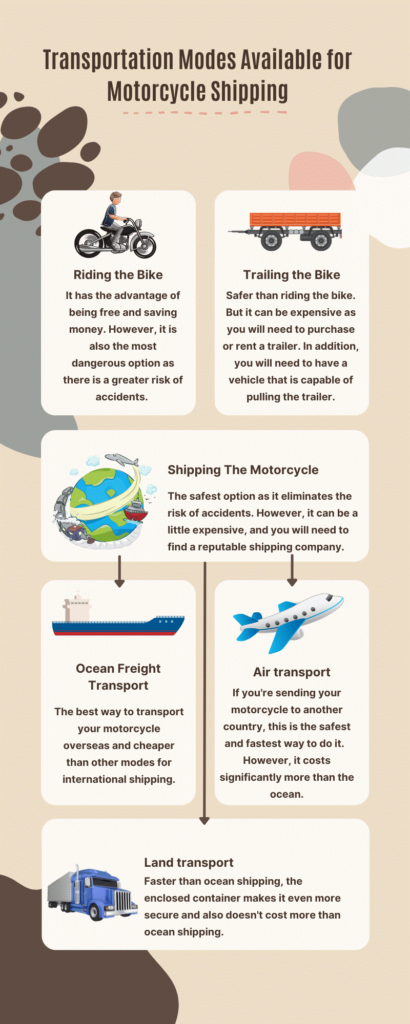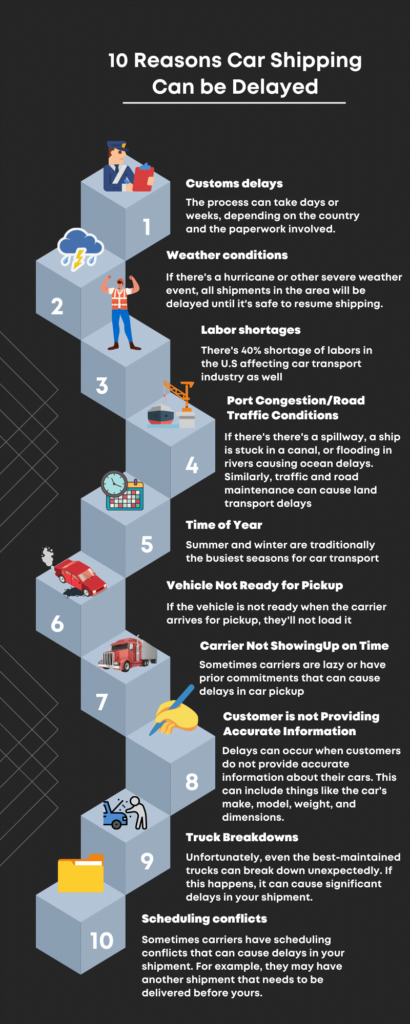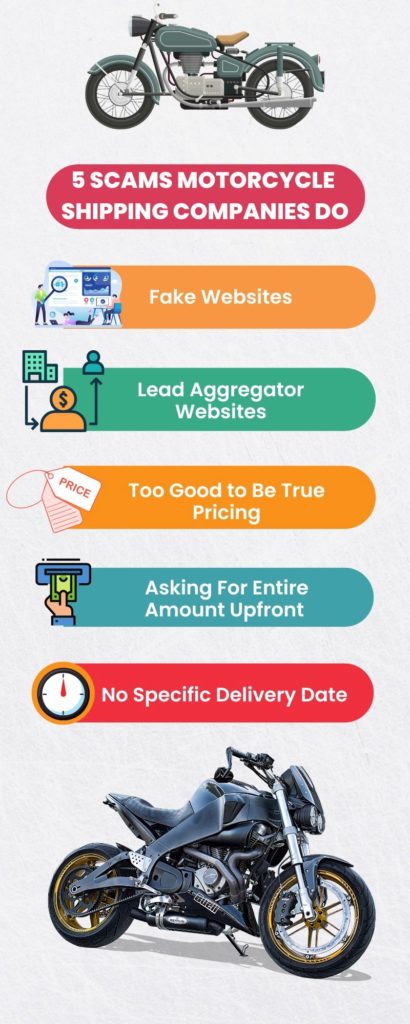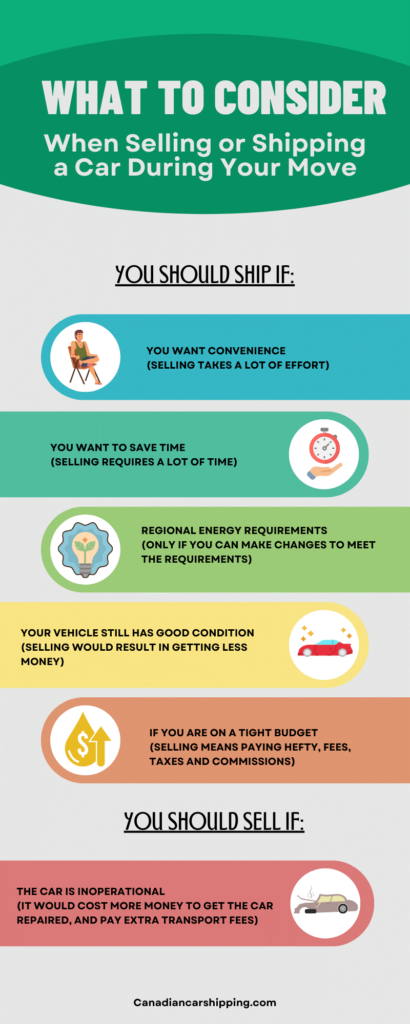Do you tend to drive a small car or a large car? Probably the former Ė a large car is typically more fuel-efficient, easier to park, and less likely to get scratched/dented. But what about when it comes to...
Do you tend to drive a small car or a large car? Probably the former Ė a large car is typically more fuel-efficient, easier to park, and less likely to get scratched/dented. But what about when it comes to transportation?
What if you have an SUV or a Truck, RV or even a Boat to transport? Would it still be treated the same as a small sedan? Only one way to find out:
Why is size important when it comes to auto transportation?
Bigger Size Costs More to Transport:
Vehicles with a bigger size cost a few hundred bucks extra because their larger size takes up more space on a trailer that can only accommodate 4-10 regular size vehicles at a time. So if a large vehicle takes space for two, it makes sense to charge them extra. Hereís an idea of different vehicle sizes and their costs for 1000 miles.
Load on Trailer
The size of a vehicle definitely matters when it comes to transporting it. The larger the vehicle, the heavier it is, which puts the load on the trailerís engine. As a result, it burns more fuel and costs more to ship a car.
For example, an SUV or truck places more strain on the engine of a trailer than a smaller car like a sedan.
In general, though, the bigger the vehicle, the more it will cost to transport. So, if youíre trying to save money on transportation costs, itís best to stick with smaller vehicles.
Equipment Required
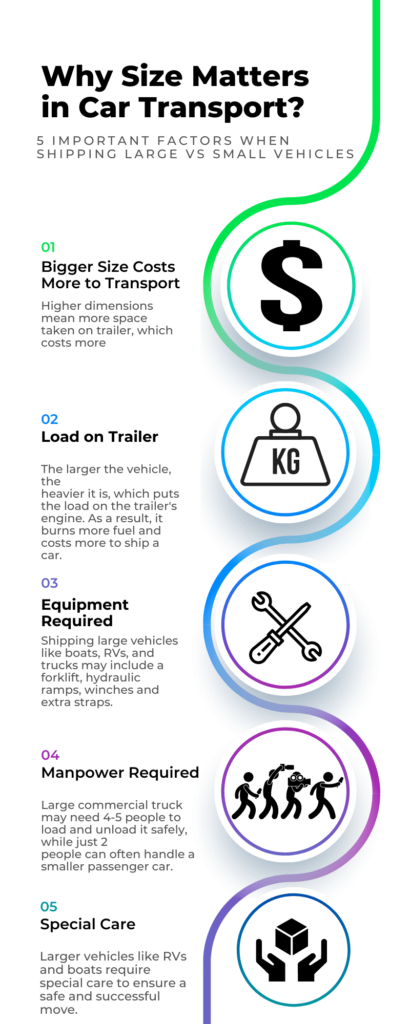
When it comes to shipping large vehicles like boats, extra equipment is required to ensure proper loading, securing and unloading. This may include a forklift, hydraulic ramps, winches and extra straps. Depending on the dimensions and weight of the boat, additional trucks or trailers may also be needed to transport it safely. Smaller vehicles can usually be shipped using standard methods, but care must still be taken to secure them properly for transport.
Manpower Required
When it comes to the transportation of vehicles, size definitely matters. Larger vehicles require more manpower to load, secure and unload, while smaller ones can often be loaded and unloaded with the help of just 1-2 people. This is an important consideration when deciding which type of vehicle to transport, as it can impact the operationís cost and efficiency.
For example, a large commercial truck may need 4-5 people to load and unload it safely, while just 2 people can often handle a smaller passenger car. This difference in manpower requirements can lead to a big difference in cost, as hiring more workers will obviously increase the overall price tag. In addition, it can also impact the efficiency of the operation, as larger vehicles take longer to load and unload than their smaller counterparts.
Special Care Depending on Vehicle Type
Whether you are looking to transport a small vehicle like a sedan or a larger one like an RV, the type of vehicle will dictate the amount of care and preparation needed. Smaller vehicles can be fully secured on a trailer and moved with ease, while larger vehicles like RVs and boats require special care to ensure a safe and successful move.
Regarding RVs, the first step is ensuring that all loose items are properly secured. This includes dishware, propane tanks, and other items that could become airborne during transport. Once everything is properly secured, the next step is to lower the RVís antennae and retract any awnings. Next, youíll want to disconnect any propane tanks and electrical hookups. Finally, itís time to secure the RV to the trailer using straps or chains.
Boats require a similar level of care when being transported. All loose items should be secured, and the boat should be properly raised out of the water using hydraulic lifts. The boat should then be securely fastened to the trailer using straps or chains. Once the boat is secure, you can then proceed with hooking up the trailer to your vehicle.
With both RVs and boats, itís important to keep an eye on weather conditions in the days leading up to transport. If there is even a chance of bad weather, itís best to postpone transport until conditions improve. Moving either of these vehicles in inclement weather is hazardous and can lead to serious accidents.
Following these simple tips ensures that your next big move goes off without a hitch.
Which Transport Mode is Best For Large Vehicles?
There are different ways to move large vehicles from one place to another. The most common method is by truck, but rail and even air transport are options for very large or sensitive items. Here, weíll look at each methodís pros and cons to help you decide which is best for your needs.
Trucking is the most common way to move large vehicles, and for a good reason. Itís relatively affordable, and there is a wide network of routes and providers to choose from. trucks can also carry other cargo in addition to vehicles, which makes them a versatile option. However, trucks can be subject to traffic delays, and the size and weight of some vehicles can make them difficult to load and unload.Rail transport is a good option for very large or sensitive vehicles that need to be moved long distances. Trains are much faster than trucks, and they provide a smooth ride that helps protect delicate items from damage. However, rail transport can be expensive and may not be available in all areas.Air transport is the quickest way to move large vehicles, but itís also the most expensive. Itís best suited for short distances or when time is of the essence. However, air transport can be limited by the size and weight of the vehicle, as well as airport regulations.Trailers For Small or Large Vehicles
Open Carrier for Inexpensive Large Vehicles
An open carrier is open from all sides, so large vehicles with irregular shapes can easily be loaded and transported on it. However, it offers lower protection, so only inexpensive vehicles should be moved on it. If you have an expensive or high-end vehicle, youíll want to use an enclosed carrier for extra protection against the elements and potential theft.
Soft Sided Enclosed Container For Expensive Large and Irregular Shape Vehicles
When shipping large and expensive vehicles, using an enclosed container with soft sides that have tarps instead of steel walls is often the best option. These containers protect the vehicle but also have more flexibility for irregular shapes and corners.
One of the benefits of using a soft-sided container is that it can be easily loaded and unloaded from a truck or trailer. This is because the sides of the container are not as rigid, making it easier to maneuver into place. In addition, soft-sided containers are often less expensive than their hard-sided counterparts.
Another benefit of using soft-sided containers is that they are typically lighter in weight than hard-sided containers. This can be a little beneficial when it comes to fuel economy and overall shipping costs.
Finally, soft-sided containers offer more protection from the elements than hard-sided containers. This is because they are typically made from materials that are better at insulating and keeping out moisture.
HotShot for Small but Valuable vehicles
If you have a small but expensive vehicle, the best way to transport it is with a hotshot trailer. Hotshot trailers are covered on all sides and can be moved quickly and easily. Plus, they offer protection from the elements and potential thieves.
However, there are a few factors to keep in mind when transporting a small but valuable vehicle. First, make sure that the hotshot trailer you select is the right size for your vehicle. You donít want it to be too big or too small. Second, be sure to secure your vehicle in the trailer properly. You donít want it shifting around during transport. Finally, make sure that you insure your vehicle while it is being transported. This will protect you in case of any damage that may occur during transit.
Frequently Asked Questions:
What are some important considerations for transporting a small but valuable vehicle with a hotshot trailer?
First, make sure the hotshot trailer you select is the right size for your vehicle. You donít want it to be too big or too small. Second, make sure that your vehicle is secure in the trailer and doesnít shift around during transport. Finally, insure your car while itís being transported.
Driving vs Shipping Larger Vehicles, which one is cheaper?
When it comes to transportation of larger vehicles, driving is generally cheaper than shipping when going for a short distance. This is because you will pay for fuel, accommodation, and food during your drive. However, if the distance is over a few hundred miles, the wear and tear and increased odometer miles on your vehicle alone will take off a significant chunk of money on its resale value. This is one reason why many people opt to ship their vehicles.
Parting Words:
Size and weight are definitely major factors that auto transport companies take into account when moving vehicles. This is the reason the higher these two are, the more it costs. Make sure to negotiate with your car shipping company if your vehicle is oversize or overweight and theyíll give you some discount for that.
The post Size Matters: A Look At The Transportation of Small vs. Big Vehicles first appeared on Canadian Car Shipping.









